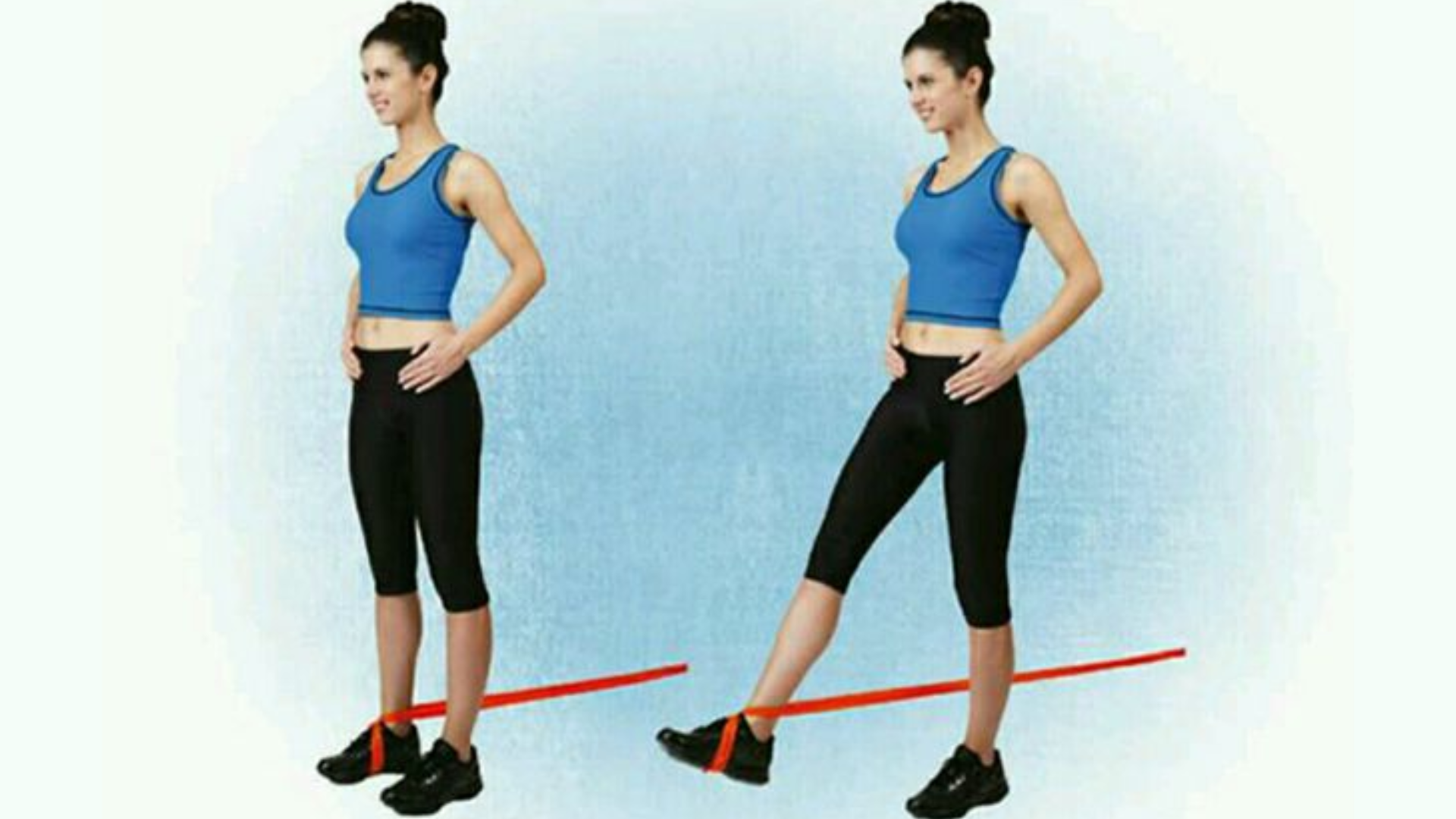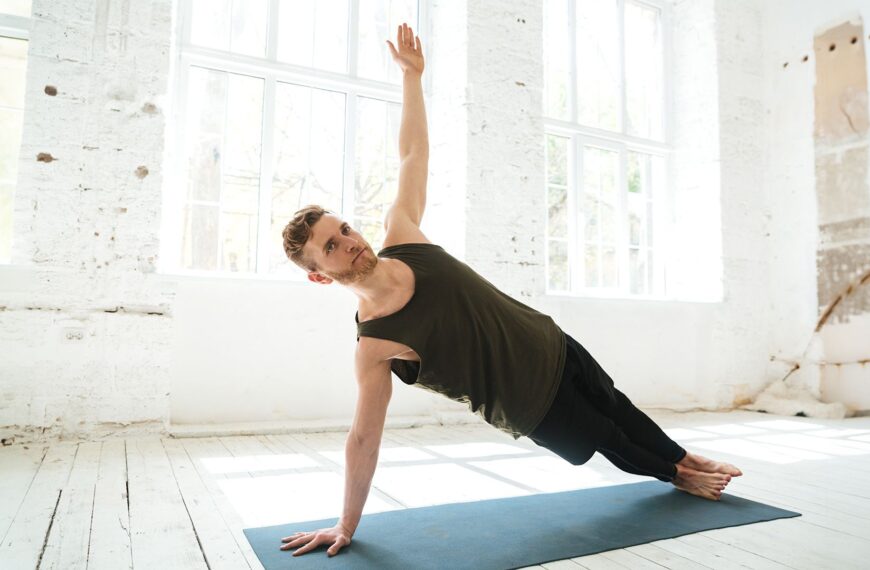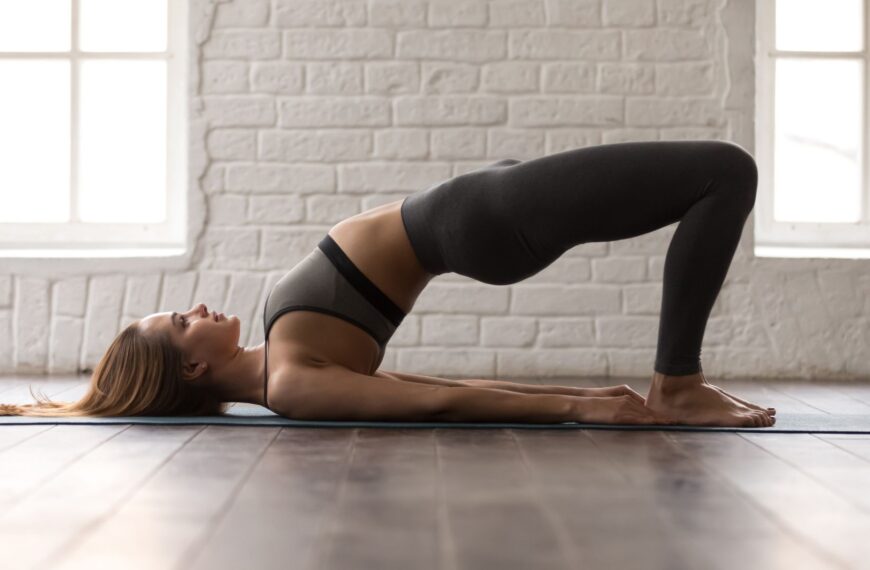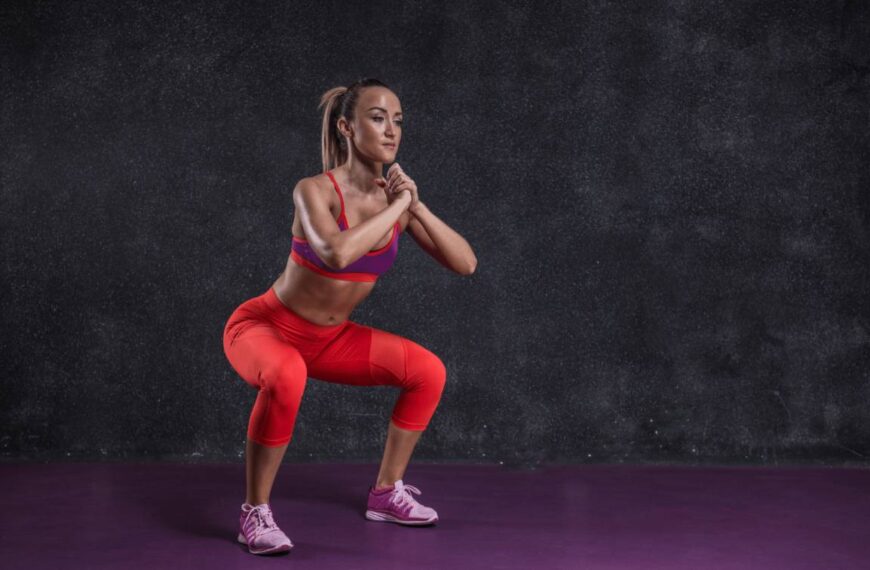Image Source: Skimble
In the quest for a well-rounded and balanced fitness routine, it’s essential to pay attention to all muscle groups and their associated exercises. Hip flexors are often neglected but play a crucial role in maintaining lower body strength and flexibility. One exercise that targets the hip flexors and promotes stability and balance is the Standing Hip Flexion. In this comprehensive guide, we’ll delve into the nuances of the Standing Hip Flexion exercise, discussing its benefits, proper execution, variations, and some essential tips to maximize its effectiveness.
Learn from this Article:
- Importance of Hip Flexion
- Benefits of Standing Hip Flexion
- Use of Merlin App for Standing Hip Flexion
- How to Perform the Standing Hip Flexion
- Variations of Standing Hip Flexion
- Proper Form and Common Mistakes
- Tips for Maximizing the Effectiveness
- Incorporating Standing Hip Flexion into Your Routine
Understanding the Importance of Hip Flexion
Before we dive into the details of the Standing Hip Flexion exercise, it’s essential to comprehend the significance of hip flexion. The hip flexors are a group of muscles responsible for bending your hip joint and bringing your thigh closer to your abdomen. These muscles are involved in various daily activities such as walking, running, cycling, and even climbing stairs. Neglecting hip flexor strength can lead to imbalances in the lower body, potentially causing issues like lower back pain and reduced mobility.
Benefits of Standing Hip Flexion
- Improved Hip Flexor Strength: The primary benefit of performing the Standing Hip Flexion exercise is the targeted strengthening of the hip flexor muscles. This added strength can enhance your overall lower body stability and functionality.
- Enhanced Flexibility: This exercise stretches and engages the hip flexors, leading to improved flexibility in the hips. Greater hip flexibility can improve your range of motion, making it easier to perform various activities and exercises.
- Core Activation: Balancing on one foot during the Standing Hip Flexion requires core engagement. This exercise can help in strengthening the core muscles, promoting better posture and balance.
- Balance and Coordination: Practicing the Standing Hip Flexion helps improve balance and coordination, which is essential for everyday activities and injury prevention.
- Injury Prevention: Strengthening the hip flexors can help prevent injuries in the lower body. This is particularly important for athletes and individuals involved in sports or physical activities.
How to Perform the Standing Hip Flexion
Now that we’ve established the importance and benefits of the Standing Hip Flexion exercise, let’s delve into the step-by-step guide on how to perform it correctly.
Equipment Needed: Resistance band
Instructions:
- Start by standing with your feet shoulder-width apart. Place a resistance band around your ankles.
- Distribute your body weight evenly on both feet to maintain balance.
- Lift one foot off the ground and balance on the other. The standing leg should be slightly bent at the knee.
- Keeping the other leg straight, slowly lift it in front of you, engaging your hip flexor muscles.
- At the top of the movement, pause briefly and squeeze your hip flexors. This maximizes the engagement of these muscles.
- Slowly lower your leg back to the starting position.
- Switch to the other leg and perform the same movement. Each leg lift and return counts as one repetition.
- Aim to complete 2-3 sets of 10-15 repetitions for each leg. You can adjust the number of repetitions based on your fitness level and goals.
Variations of Standing Hip Flexion
Variations can add spice to your exercise routine and target different muscle groups. Here are some variations of the Standing Hip Flexion exercise:
- Resistance Band Variations: Change the resistance level of the band for added difficulty. Thicker bands provide more resistance, making the exercise more challenging.
- Standing Hip Flexion with a Dumbbell: Hold a dumbbell or kettlebell in one hand while performing the exercise. This added weight increases the challenge and further engages your hip flexors.
- Standing Hip Flexion on an Unstable Surface: Perform the exercise on an unstable surface, such as a Bosu ball or foam pad, to increase the demand on your balance and stabilization muscles.
- Standing Hip Flexion with Leg Swing: Instead of lifting your leg and holding it, perform a continuous leg swing, moving it forward and backward. This dynamic movement engages the hip flexors differently and adds an element of cardio to the exercise.
- Standing Hip Flexion with Knee Drive: Lift your knee as high as you can while maintaining proper form. This variation emphasizes knee drive and further engages the hip flexors.
Proper Form and Common Mistakes
Maintaining proper form during the Standing Hip Flexion exercise is crucial to reap its full benefits and avoid injury. Here are some common mistakes to watch out for:
Mistake 1: Leaning Forward – It’s common to lean forward when lifting the leg. This not only reduces the effectiveness of the exercise but also places unnecessary strain on your lower back. Ensure your torso remains upright throughout the movement.
Mistake 2: Inadequate Range of Motion – Some individuals may struggle to lift their leg high enough. While it’s essential to maintain proper form, try to work on increasing your range of motion gradually. Over time, you’ll be able to lift your leg higher.
Mistake 3: Neglecting Core Engagement – Your core should be engaged to maintain balance. Neglecting core engagement can lead to wobbling and reduced effectiveness.
Mistake 4: Speeding Through Repetitions – Avoid rushing through the exercise. Perform each repetition slowly and with control to maximize muscle engagement.
Tips for Maximizing the Effectiveness
To get the most out of the Standing Hip Flexion exercise, consider these tips:
- Warm-Up: Always start with a proper warm-up to prepare your muscles for exercise. Dynamic stretches and light cardio can help loosen up your hip flexors.
- Focus on Form: Prioritize proper form over the number of repetitions. It’s better to do fewer repetitions with good form than to rush through them with poor form.
- Engage the Core: Keep your core engaged throughout the exercise to enhance balance and stability.
- Control the Movement: Perform the exercise with control and avoid swinging your leg. This ensures that you target the hip flexors effectively.
- Breathe: Don’t forget to breathe! Inhale as you lift your leg and exhale as you lower it.
- Gradually Increase Intensity: As you become more comfortable with the exercise, increase the resistance or try variations to challenge yourself.
Incorporating Standing Hip Flexion into Your Routine
Including the Standing Hip Flexion exercise into your fitness routine can offer numerous benefits, but it’s essential to integrate it properly. Here’s how to incorporate it:
- Frequency: Aim to perform the Standing Hip Flexion exercise 2-3 times a week to work on hip flexor strength and flexibility.
- Warm-Up: Begin your workout with a warm-up that includes dynamic stretches and light cardio.
- Main Workout: Include the Standing Hip Flexion exercise as part of your lower body or core workout routine. Perform 2-3 sets with 10-15 repetitions per leg.
- Progressive Overload: Gradually increase the resistance or intensity of the exercise to continue challenging your muscles.
- Listen to Your Body: Pay attention to how your body responds to the exercise. If you experience any pain or discomfort, consult a fitness professional or healthcare provider.
Conclusion
The Standing Hip Flexion exercise is a valuable addition to any fitness routine, as it targets the often-neglected hip flexor muscles. By strengthening these muscles, you can improve lower body stability, enhance flexibility, and reduce the risk of injuries. Whether you’re an athlete looking to boost performance or someone aiming to improve overall balance and coordination, this exercise can be tailored to your specific needs. Remember to perform it with proper form, gradually increase the challenge, and stay consistent to reap the maximum benefits. Incorporate the Standing Hip Flexion into your routine, and you’ll be well on your way to achieving a stronger, more flexible lower body.
Use of Merlin App for Standing Hip Flexion
The Merlin App offers valuable assistance for performing exercises like Standing Hip Flexion, ensuring that you execute them with proper form and technique. Standing Hip Flexion is an exercise that primarily targets the hip flexor muscles, and it can be particularly beneficial for improving hip mobility and strength. Here’s how the Merlin App can help you perform this exercise effectively:
- Real-Time Feedback: When performing Standing Hip Flexion, it’s crucial to maintain balance and ensure that your hip flexors are engaged correctly. The app employs AI-driven real-time feedback to analyze your body’s positioning and alignment as you perform the exercise. It can provide instant cues on whether you need to adjust your posture or engage your hip flexors more effectively. This guidance is invaluable in helping you avoid common mistakes and potential injuries.
- Customized Workouts: The Merlin App allows you to include Standing Hip Flexion in your personalized workout routines. Based on your fitness goals and experience level, you can select the appropriate variations of this exercise. The app can recommend the number of repetitions, sets, and the best time to incorporate it into your workout plan to maximize its benefits.
- Voice Feedback: During your workout, the app’s voice feedback feature can verbally guide you through the exercise. It can remind you to stand tall, engage your core, and maintain proper posture as you lift your leg. This real-time voice coaching keeps you focused and motivated throughout the set, ensuring you derive the most from each repetition.
- Progress Tracking: Standing Hip Flexion, like any exercise, requires consistency to yield results. The Merlin App helps you keep track of your progress. You can monitor your performance over time, noting improvements in your hip flexibility and strength. This data-driven approach provides a sense of accomplishment and motivates you to continue with your fitness journey.











